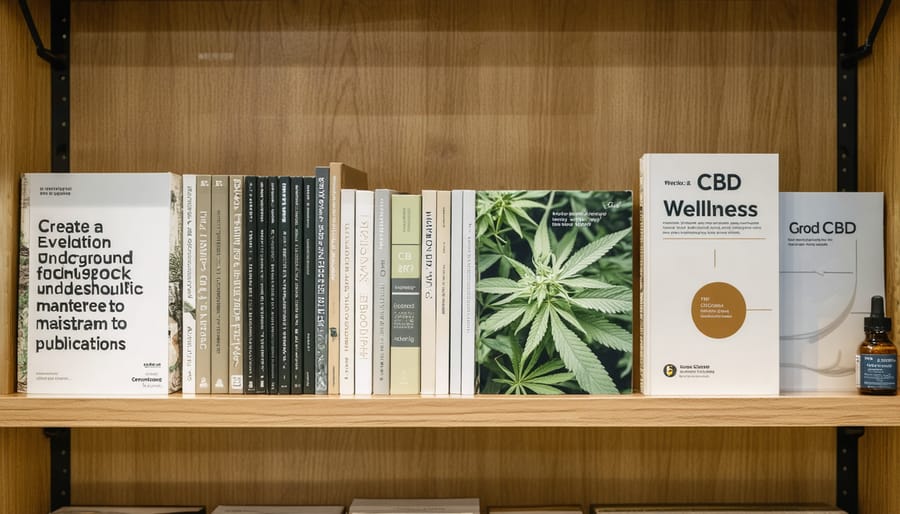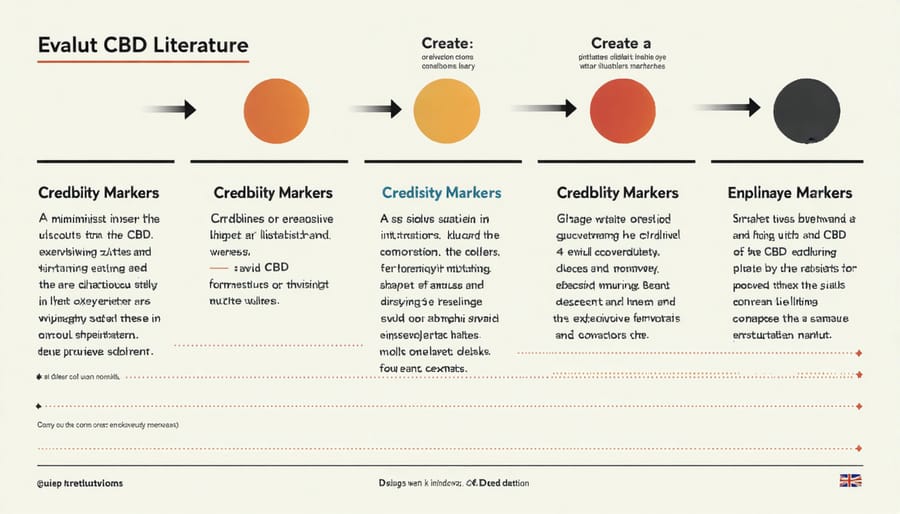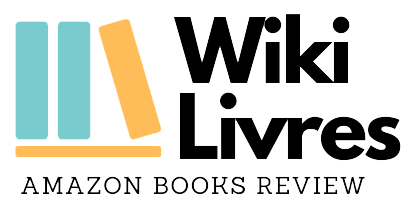
How CBD is Reshaping Modern Wellness Literature
The growing intersection of CBD literature and wellness publishing marks a fascinating evolution in both medical discourse and popular culture. As more readers buy CBD oil online in canada and seek reliable information, authors and researchers are responding with an unprecedented wave of publications exploring this compelling compound. From scientific journals to lifestyle guides, CBD has emerged as a central topic in contemporary wellness literature, sparking conversations about natural healing, holistic health, and the future of alternative medicine.
What distinguishes this literary movement is its remarkable diversity – spanning scholarly research papers, personal narratives of healing journeys, and practical guides for incorporating CBD into daily wellness routines. This rich tapestry of perspectives offers readers not just information, but a deeper understanding of CBD’s role in modern wellness culture. As publishers continue to expand their CBD-focused collections, readers gain access to increasingly nuanced and well-researched perspectives on this versatile compound’s potential benefits and applications.
The surge in CBD literature reflects a broader cultural shift toward natural wellness solutions and evidence-based healing practices. Whether exploring historical uses, current research, or practical applications, these works contribute to an evolving dialogue about health, wellness, and the role of plant-based medicines in contemporary life.
The Evolution of CBD in Wellness Literature
From Counter-Culture to Mainstream Bookshelves
The journey of CBD in literature mirrors society’s evolving relationship with cannabis and wellness. What began as underground publications and countercultural manifestos in the 1960s and 70s has blossomed into a diverse collection of mainstream works that reflect today’s contemporary literature trends. Early writings often focused on hemp’s historical significance and medicinal properties, tucked away in alternative bookstores and passed through grassroots networks.
The watershed moment came in the early 2000s when scientific publications began exploring CBD’s potential benefits, sparking a wave of accessible books that bridged the gap between research and public understanding. As legal barriers softened and social acceptance grew, publishing houses opened their doors to authors ranging from medical professionals to wellness advocates, each bringing their unique perspective to the CBD conversation.
Today’s bookshelves showcase an impressive array of CBD-related literature, from practical guides and cookbooks to personal memoirs and holistic healing journals. This transformation reflects not just changing laws and attitudes, but also our collective desire to understand natural wellness options. What’s particularly fascinating is how these books have helped normalize conversations about CBD, making it easier for readers to explore and discuss its role in modern wellness practices.
The shift from margins to mainstream hasn’t just changed where we find CBD books – it’s revolutionized how we talk about plant-based wellness altogether.

Scientific Literature Meets Popular Writing
The fascinating convergence of scientific research and popular wellness writing has transformed how we understand and read about CBD. As researchers publish groundbreaking studies in peer-reviewed journals, wellness authors have become adept at translating complex findings into digestible content for everyday readers. This bridge between academia and alternative wellness literature has elevated the quality of CBD books available today.
Many contemporary CBD wellness authors now incorporate citations from scientific journals, weaving technical information with practical advice and personal experiences. This blend creates a more credible and comprehensive reading experience, helping readers understand not just the “what” but also the “why” behind CBD’s effects on wellbeing.
The influence of scientific literature has also sparked a new generation of wellness writers who emphasize evidence-based approaches. These authors often have backgrounds in both science and writing, making them uniquely qualified to interpret research for the general public. Their work typically includes detailed explanations of the endocannabinoid system, dosage guidelines based on clinical studies, and real-world applications supported by research.
This marriage of scientific rigor and accessible writing has raised the bar for CBD literature, helping readers make more informed decisions about their wellness journey while maintaining an engaging and relatable reading experience.

Notable CBD Wellness Authors and Their Perspectives
Medical Professionals Turn Authors
In recent years, a growing number of medical professionals have stepped into the role of authors, sharing their expertise and clinical experiences with CBD through compelling books. These healthcare experts bring a unique perspective to the literature, combining scientific knowledge with practical applications in patient care.
Dr. Bonni Goldstein’s “Cannabis is Medicine” stands out as a comprehensive guide that bridges the gap between medical research and everyday understanding. Drawing from her extensive experience treating patients, Dr. Goldstein presents complex information about CBD in an accessible format that resonates with both practitioners and general readers.
Equally noteworthy is “CBD: A Patient’s Guide to Medical Cannabis” by Leonard Leinow and Juliana Birnbaum, which features contributions from multiple healthcare professionals. The book offers detailed insights into dosing, conditions, and treatment protocols, all while maintaining a reader-friendly approach that doesn’t overwhelm with medical jargon.
Nurse practitioner Eloise Theisen brings a fresh perspective in her works, focusing on the practical application of CBD in senior care. Her writing style particularly appeals to older readers and their caregivers, offering clear guidelines and real-world examples from her clinical practice.
These medical authors consistently emphasize evidence-based information while acknowledging the evolving nature of CBD research. Their books often include patient case studies, making complex medical concepts more relatable and understandable for the average reader. By sharing their professional insights through literature, these healthcare experts help readers make more informed decisions about CBD use while maintaining scientific integrity.
Holistic Wellness Writers
In recent years, a growing community of wellness authors has embraced CBD as a cornerstone of holistic health, offering readers comprehensive insights into natural healing practices. These writers skillfully blend ancient wisdom with modern research, creating accessible guides that speak to both newcomers and experienced wellness enthusiasts.
Notable authors like Dr. Rachna Patel have contributed significantly to this space, combining their medical expertise with a holistic approach to explain CBD’s role in overall wellness. Her work stands out for its evidence-based perspective while remaining approachable for the average reader.
Juliana Birnbaum’s writings explore the intersection of plant medicine and holistic health, offering readers a deeper understanding of how CBD fits into traditional healing practices. She emphasizes the importance of viewing CBD not as a miracle cure, but as part of a broader wellness journey.
The work of Michelle Pilgrim brings a fresh perspective to CBD literature, incorporating mindfulness practices and lifestyle modifications alongside CBD education. Her books often include practical applications, from recipes to daily wellness routines, making the information immediately actionable for readers.
These holistic wellness writers share a common thread: they approach CBD as part of an integrated wellness solution rather than a standalone remedy. Their works typically include discussions about nutrition, exercise, stress management, and mental health, presenting CBD within this broader context of total well-being.
What sets these authors apart is their commitment to education over sensation, offering balanced perspectives that acknowledge both the benefits and limitations of CBD in holistic health practices. Their writing style tends to be warm and inclusive, making complex information accessible to diverse audiences while maintaining scientific integrity.
Reader’s Guide to CBD Literature
Separating Facts from Fiction
In today’s information-rich world, distinguishing reliable CBD literature from questionable sources requires a thoughtful approach. As readers, we need to develop skills for evaluating literature critically, especially when it comes to wellness claims.
Start by checking the author’s credentials and background. Look for writers with relevant expertise in medicine, pharmacology, or wellness, and verify their qualifications through reputable sources. Pay attention to publication dates, as CBD research evolves rapidly, making older publications potentially outdated.
Consider the source material’s references and citations. Quality CBD literature should draw from peer-reviewed studies, clinical trials, and established medical journals. Be wary of books that rely heavily on anecdotal evidence or make sweeping claims without substantial backing.
Red flags to watch for include:
– Promises of miracle cures
– Absence of disclaimers or warnings
– Lack of scientific citations
– Heavy promotion of specific products
– Dismissal of conventional medicine
Look for balanced perspectives that acknowledge both CBD’s potential benefits and limitations. Trustworthy sources typically discuss possible side effects, drug interactions, and the importance of consulting healthcare providers.
Remember that personal experiences shared in wellness books, while valuable, shouldn’t be your only source of information. Cross-reference claims with current medical research and official health organizations. This approach helps create a well-rounded understanding of CBD’s role in wellness while maintaining a healthy skepticism toward extraordinary claims.

Essential Reading List
For readers seeking authoritative information on CBD and wellness, we’ve carefully curated a selection of must-read books that combine scientific research with practical insights. Leading our recommendations is “CBD: A Patient’s Guide to Medical Cannabis” by Leonard Leinow and Juliana Birnbaum, which offers a comprehensive overview backed by extensive research and real-world applications.
“The CBD Oil Miracle” by Laura Lagano presents an accessible approach to understanding CBD’s potential benefits, making it perfect for newcomers to the topic. While exploring wellness publishing, we discovered “Cannabis and CBD for Health and Wellness” by Aliza Sherman and Dr. Junella Chin, which stands out for its balanced perspective and evidence-based recommendations.
For those interested in the scientific aspects, “CBD: What You Need to Know” by Gregory L. Smith, MD, delivers detailed yet digestible information about CBD’s interaction with the human body. Martin A. Lee’s “Smoke Signals” offers fascinating historical context while examining CBD’s journey from controversy to mainstream acceptance.
We also recommend “The ABCs of CBD” by Shira Adler for its warm, conversational approach to explaining complex concepts, making it particularly appealing for those new to the subject. Each of these books has been selected for its reliability, readability, and commitment to presenting well-researched information without overwhelming jargon or sensationalism.
Remember to approach each book with an open mind while maintaining a healthy skepticism, as research in this field continues to evolve.
Red Flags in CBD Literature
When exploring CBD literature, it’s essential to be aware of certain warning signs that might indicate unreliable or misleading information. Watch out for books that make sweeping miracle claims or promise to cure multiple conditions without scientific backing. Credible CBD literature should acknowledge both the benefits and limitations of CBD use, rather than presenting it as a magical solution.
Be wary of authors who lack relevant credentials or fail to cite scientific studies. While personal experiences are valuable, reliable CBD books should balance anecdotal evidence with peer-reviewed research. Look out for publications that heavily promote specific brands or products, as this might indicate commercial bias rather than objective information.
Another red flag is the absence of dosage guidelines or safety considerations. Trustworthy CBD literature should always include discussions about potential side effects, drug interactions, and the importance of consulting healthcare providers. Books that dismiss or minimize these concerns might be prioritizing sales over reader safety.
Finally, be cautious of works that use outdated research or make claims based on preliminary studies without proper context. The CBD field is rapidly evolving, and responsible authors should acknowledge the developing nature of CBD research while avoiding definitive statements about unproven benefits.
As we navigate the expanding world of CBD literature, it’s crucial to approach these resources with both enthusiasm and discernment. The growing body of wellness books and literary works featuring CBD reflects our society’s increasing interest in natural healing approaches and holistic well-being. However, this abundance of information also highlights the importance of being selective readers.
Looking ahead, we can expect to see even more diverse perspectives on CBD emerge in literature, from evidence-based wellness guides to personal healing journeys and creative works. The trend suggests a move toward more nuanced, well-researched publications that bridge the gap between scientific understanding and practical application.
For readers seeking knowledge about CBD, remember that the best approach is to draw from multiple credible sources, including both traditional research and contemporary wellness literature. Consider joining reading groups or online communities where you can discuss CBD literature with others, sharing experiences and insights while building a more comprehensive understanding.
As this literary landscape continues to evolve, stay curious but critical. Look for works that provide balanced perspectives, cite reliable sources, and acknowledge both the potential benefits and limitations of CBD. By maintaining an informed and open-minded approach to CBD literature, you’ll be better equipped to make meaningful decisions about your wellness journey while enjoying the rich tapestry of stories and knowledge available in this growing field.
